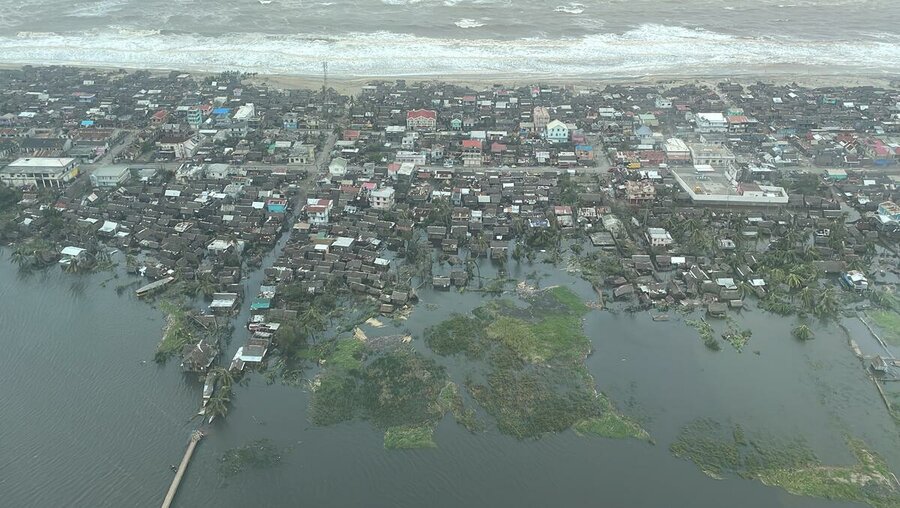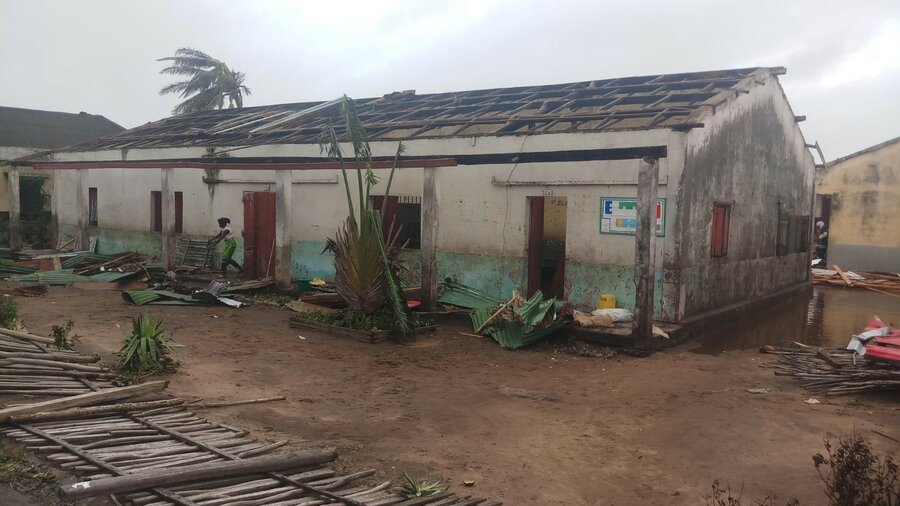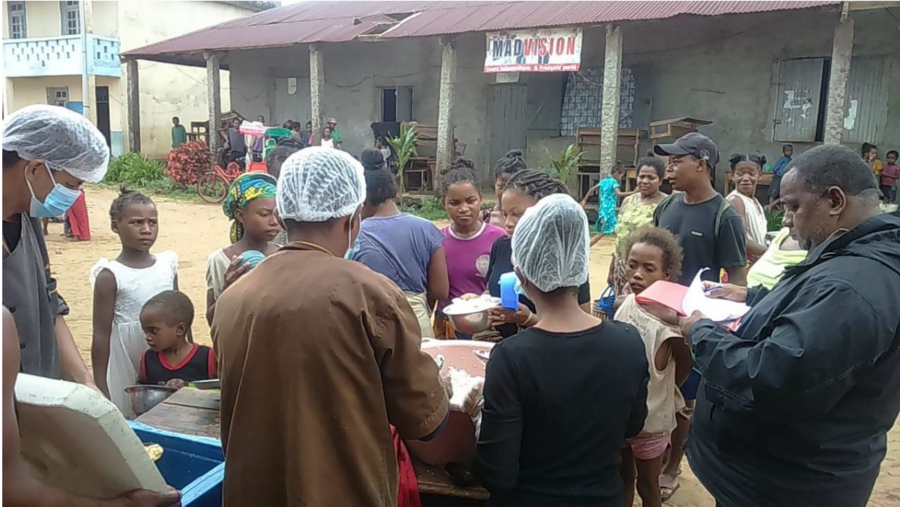The Latest Updates out of Madagascar: WFP Provides Immediate Emergency Assistance in the Aftermath of Cyclone Batsirai

Cyclone Batsirai made landfall on the central-eastern coast of Madagascar on Saturday, February 5. Extreme weather events like cyclones have become more frequent and intense in Southern Africa.
What You Need to Know
Hours after Cyclone Batsirai wreaked destruction in eastern Madagascar, the United Nations World Food Programme (WFP), was on the ground providing emergency assistance.
- Initial damage assessments indicate that 10 people have lost their lives.
- Nearly 50,000 people are displaced, according to the National Office for Risks and Disasters Management. An estimated 150,000 people could still be displaced due to further flooding and landslides.
- The cyclone comes on the heels of Storm Ana, the first named storm of the 2021-22 South-West Indian Ocean cyclone season that saw severe damage to livelihoods, agricultural land and infrastructure in Madagascar, Mozambique and Malawi.

Aerial views from a UNHAS flight show the extent of the devastation caused by Cyclone Batsirai, which made landfall on the central-eastern coast of Madagascar on Saturday.
U.N. World Food Programme staff at the scene report that the coastal town of Mananjary has been completely devastated. Houses have been swept away by the violent winds and access is now only possible by air. Manakara, some 62 miles to the south, is also inaccessible by road.
“Everything was shaking. It felt like claws were pulling the roof. I heard metal sheets ripped from the roofs of nearby houses bang against my door,” said Martina Azzalea, head of the U.N. World Food Programme office in Manakara in a voice message. “Power lines were cut and the whole city was left completely in the dark.”

Heavy rains and high winds have caused flooding, displacement and destruction of key infrastructure.
A few hours later, people were already at work to rebuild their lives. “I was struck by the resilience and dignity of these people, who probably lost most of what they had and were ready to start again,” Azzalea said.
What Is WFP Doing to Help?
To assist those who lost everything to the cyclone, the U.N. World Food Programme started distributing hot meals to 4,000 evacuated and displaced people in shelters, in coordination with Government authorities. In advance of the cyclone, the U.N. World Food Programme had pre-positioned 50 metric tons of food stocks, half in Manakara, half in Tamatave, the two main cities in the east/south-east coast, to be able to quickly assist 10,000 people (2,000 households) for 10 days.

Hot meals have been distributed to more than 1,000 displaced people in Manakara in the immediate wake of the cyclone.
“The floods and bad weather have not only devastated homes and damaged property, but above all they have destroyed the livelihoods and sources of income of the affected families,” said Pasqualina Di Sirio, the U.N. World Food Programme country director in Madagascar. “Affected families, currently in a situation of total destitution, will see their living conditions deteriorate in the absence of urgent assistance until their situation returns to normal.”
In the coming days, the U.N. World Food Programme is planning to set up distributions of food and cash transfers to those in need.
We urgently need your support to scale up our response. Please donate today.
This blog originally appeared on WFP’s Stories on February 6, 2022 and was written by Simona Beltrami.




